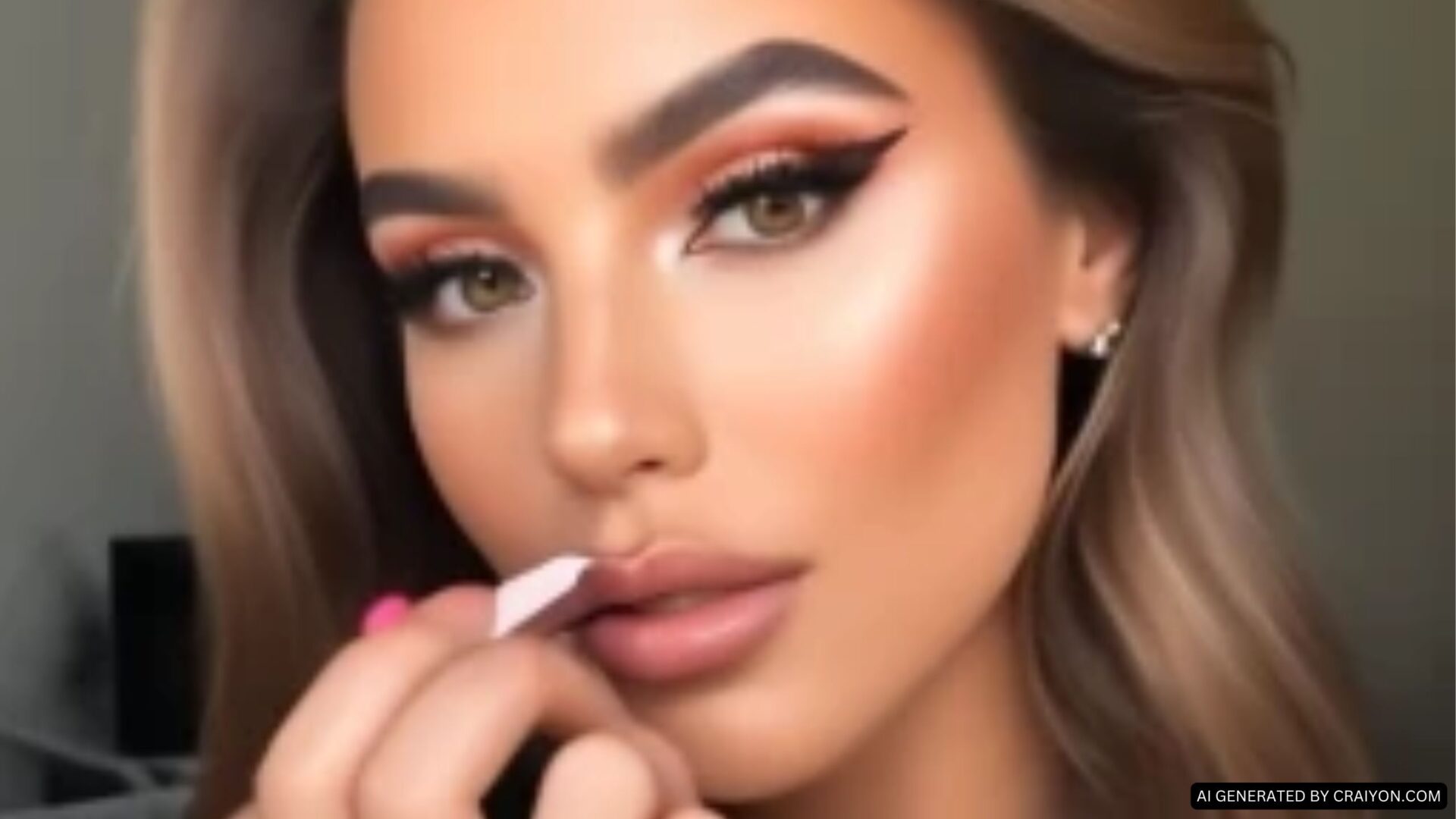The Viral Trends of 2025 and THE GREAT DISSOLVING Trend: A Psychological and Mythological Perspective
February 2025 saw an explosion of viral trends across social media, reflecting the collective psyche of the digital age. From beauty transformations to political confrontations and nostalgic resurgences, these trends offer a fascinating glimpse into contemporary society. Beyond their surface-level appeal, these viral phenomena can be examined through the lens of psychology, particularly the field of visage and identity studies, which explores how our appearance influences our self-perception and social interactions. Additionally, mythology provides timeless insights into the human experience, with figures like Narcissus and Eris mirroring modern digital culture.
The Great Dissolving: A Shift Toward Natural Beauty
One of the most significant trends of 2025 was the movement toward dissolving facial fillers. Influencers, celebrities, and everyday individuals documented their decision to remove cosmetic enhancements, embracing more natural aesthetics. Social media platforms amplified this shift, making it not just a personal choice but a cultural statement.
This trend aligns with the field of social and personality psychology, which examines how societal standards influence self-esteem and identity. The mere-exposure effect—a psychological principle stating that people tend to prefer familiar stimuli—explains why trends oscillate between extremes. Over the past decade, the proliferation of exaggerated beauty standards led to a saturation point, making natural appearances feel like a refreshing alternative.
The ancient myth of Narcissus provides an intriguing parallel. Narcissus, captivated by his own reflection, ultimately perished in pursuit of an unattainable ideal. Similarly, the modern era of hyper-curated online personas fosters an obsessive relationship with self-image, sometimes leading to dissatisfaction and corrective actions such as the dissolution trend.
The Vulnerability of Exposure: Without Makeup vs. Without Clothes
She stands before the mirror, bare. Not just bare-skinned, but bare-souled. Exposed. Vulnerable. The way a woman might feel if she were standing naked in front of someone who has never seen her that way before. It’s terrifying, the fear of being seen without the armor of fabric, without the shield of silk and lace, without the soft illusion of mystery.
But isn’t that what a face without makeup is too? A kind of nakedness? A terrifying, unmasked version of oneself, stripped down to freckles and uneven tones, to shadows beneath the eyes that betray sleepless nights. A woman without makeup faces the same fear as one without clothes—judgment, rejection, the possibility that who she is without adornment is not enough.
And yet, when she wears it—the good kind, the kind that blends effortlessly into her skin, that lifts, highlights, contours, and paints—she feels covered, protected. As if makeup is a warm coat on a cold day, a shield of artistry that tells the world: This is me, but better.
But when the Great Dissolving began, when the whispers of change swept through social media, she felt it like an earthquake beneath her carefully structured beauty. The stories flooded in—women removing not just their fillers, but their masks. The glossy lips vanished, the carved cheekbones softened, the illusion faded. And what was left?
A choice.
A choice between continuing to exist behind an artfully crafted image or stepping forward as the raw, unfiltered truth of herself.
She looks at herself again, this time without the thick lashes, without the blurred edges of foundation. Her heart hammers. But then—something else. Something warm, unexpected.
Relief.
The fear of exposure, the shame of imperfection, it doesn’t vanish in a day. But as she wipes away the remnants of what once defined her, she realizes that beauty was never just in the mask. It was always in the face beneath, waiting to be seen.
Celebrities And The Great Dissolving
Anna Paul and Kylie Jenner are two high-profile influencers who have played a role in the “Great Dissolving” trend—where celebrities and social media personalities are choosing to dissolve their facial fillers in favor of a more natural appearance.
Anna Paul and Her Decision to Remove Fillers
Zobrazit příspěvek na Instagramu
Anna Paul is a prominent Australian influencer known for her engaging content across multiple platforms. She has amassed a substantial following, with over 2.4 million followers on Instagram, where she shares lifestyle photos, modeling shots, and personal moments.
Anna Paul, a well-known influencer, decided to dissolve her lip fillers after eight years. She shared that she no longer felt like herself when looking in the mirror, which led her to take action. Her choice reflects a larger movement where people are re-evaluating their cosmetic procedures and opting for a more authentic look. Paul’s openness about the process resonated with many of her followers, sparking discussions about body image and self-perception in the social media era.
Kylie Jenner’s Influence on Beauty Standards
Kylie Jenner has had a profound influence on beauty trends, particularly with her signature plump lips, which she initially achieved through fillers. In 2018, she surprised fans by revealing she had them dissolved, stating, “I got rid of all my filler.” However, by October of that same year, she confirmed she had resumed getting them. Jenner’s fluctuating approach to fillers mirrors the broader conversation about beauty ideals—how they evolve and how personal choices can shift over time.
The Bigger Trend: A Shift Toward Natural Beauty
The “Great Dissolving” trend marks a cultural shift in beauty standards. While fillers and other cosmetic enhancements remain popular, there’s a growing desire for a more natural, balanced appearance. Many who previously embraced extreme aesthetic changes are now advocating for moderation. The trend has gained traction on social media platforms like TikTok, where users share their experiences with dissolving fillers and embracing their natural features.
Both Anna Paul and Kylie Jenner’s journeys highlight the evolving nature of beauty trends, self-expression, and the power of social media in shaping public perception. Would you like a more detailed analysis of how this trend impacts the beauty industry?
Molly-Mae Hague
Zobrazit příspěvek na Instagramu
Molly-Mae Hague, a prominent influencer and former Love Island contestant, has been open about her experiences with cosmetic enhancements, particularly her journey with facial fillers.
Initial Use of Fillers
In her early twenties, Molly-Mae opted for various facial fillers, including lip and jawline enhancements, aiming to achieve a specific aesthetic popular at the time. However, she later expressed that these procedures led her to a point where she felt she no longer recognized herself. Reflecting on this period, she admitted, “I went too far” with cosmetic interventions.
Decision to Dissolve Fillers
In 2021, Molly-Mae made the conscious decision to dissolve her facial fillers, seeking to return to a more natural appearance. She documented this transformation on her social media platforms, sharing before-and-after photos to highlight the changes. She described the process as liberating, stating that she felt “the prettiest [she’s] ever felt” after removing the fillers.
Reintroduction of Cosmetic Procedures
After maintaining a filler-free appearance for several years, Molly-Mae recently disclosed that she has begun incorporating certain cosmetic procedures back into her routine. Specifically, she mentioned resuming Botox treatments, marking a shift from her previous stance on cosmetic enhancements.
Personal Reflections
Throughout her evolving journey with cosmetic procedures, Molly-Mae has emphasized the importance of personal choice and self-awareness. She has used her platform to discuss the pressures of aesthetic perfection in the public eye and encourages her followers to make informed decisions regarding cosmetic enhancements.
Molly-Mae Hague’s experiences reflect a broader dialogue about beauty standards and the evolving perceptions of cosmetic procedures in contemporary society.
Political Showdowns in Town Halls
In a different realm of virality, political town halls became battlegrounds for public dissent. Viral videos depicted constituents challenging representatives on contentious issues, often leading to officials retreating from in-person events in favor of virtual formats.
This phenomenon can be understood through group psychology and crowd dynamics, particularly the concept of deindividuation—a psychological state where individuals in groups feel a diminished sense of personal responsibility. When facing a large, passionate audience, officials may experience heightened pressure, sometimes resulting in avoidance tactics. Simultaneously, the virality of these confrontations emboldens more citizens to participate, creating a feedback loop.
The myth of Eris, the goddess of discord, is relevant here. In Greek mythology, Eris threw the Golden Apple of Discord into a gathering of gods, inscribed with “for the fairest,” igniting a rivalry that led to the Trojan War. In modern politics, a single viral moment—akin to Eris’s apple—can trigger widespread discourse, shaping public perception and policy discussions.
The Power of Nostalgia: Old Songs Reborn
February 2025 also saw the resurgence of old songs on social media, particularly through TikTok. Tracks released years—even decades—ago resurfaced, often through dance challenges, emotional storytelling, or meme adaptations.
From a psychological standpoint, this trend is rooted in nostalgia psychology, which studies how memories shape identity and emotions. The reminiscence bump—a phenomenon where people recall music, movies, and experiences from their formative years with heightened emotional intensity—explains why older songs find renewed popularity among both original and new audiences.
This pattern mirrors cyclical storytelling in mythology. Just as ancient tales were retold across generations with new interpretations, music, too, is revived with contemporary relevance.
TikTok and Instagram’s Aura-Based Trends
Gen Z’s creative lexicon produced new viral trends centered around “aura” descriptions. Videos featuring phrases like “With the Most Aura” gained traction, where users described themselves or others with unique, humorous, or poetic phrases. Another trend, “My Favourite Horror Movie,” humorously referenced real-life dramatic moments.
These trends align with linguistic relativity, the idea that language shapes perception. Social media has accelerated the evolution of language, with new slang emerging at unprecedented speeds. Psychologists studying identity construction through language note that these trends help users express individuality within communal frameworks, reinforcing both self-expression and social bonding.
Kmart’s Grazing Board Trend: The Rise of Minimalist Aesthetics
Kmart’s latest homeware line inadvertently sparked a viral grazing board trend, where people showcased minimalist yet elegant food arrangements. This shift away from extravagant spreads toward simplicity aligns with broader cultural movements favoring minimalism and sustainability.
Psychologically, this reflects decision fatigue theory—the idea that excessive choices lead to cognitive overload, making simplicity more appealing. This trend also taps into aesthetic psychology, which examines how visual harmony affects mood and perception.
Ancient rituals often emphasized simplicity in offerings to deities, paralleling the modern preference for understated elegance in communal experiences.
Valentine’s Revival: Bringing Back the Tradition
A surprising but heartwarming trend in February 2025 was the revival of old-fashioned Valentine’s Day gestures. Social media users embraced handwritten notes and grand romantic declarations, reminiscent of pre-digital courtship.
This reflects the scarcity principle—a psychological bias where things perceived as rare gain increased value. In an era dominated by digital communication, handwritten gestures stand out as meaningful and intentional.
This resurgence mirrors the romantic ideals found in mythology, where gods and mortals alike pursued love through symbolic gestures.
The Ever-Evolving Digital Psyche
The viral trends of 2025 underscore a fundamental truth: human nature, while constantly adapting, remains deeply rooted in psychological and mythological frameworks. Whether through the dissolution of exaggerated beauty standards, political confrontations, or nostalgic revivals, these trends reflect age-old desires for self-expression, connection, and meaning.
From Narcissus’ tragic reflection to Eris’ discord-sowing apple, ancient myths continue to provide allegories for contemporary digital culture. As we navigate this evolving landscape, understanding these psychological and historical patterns allows us to engage more thoughtfully with the ever-changing world of virality.



